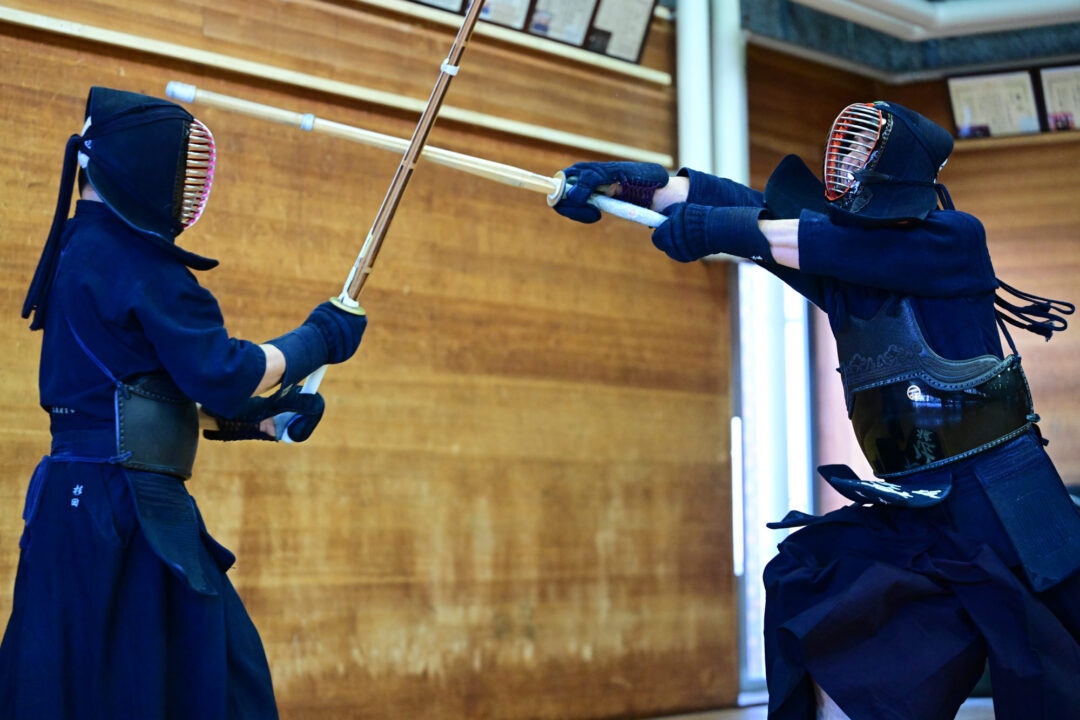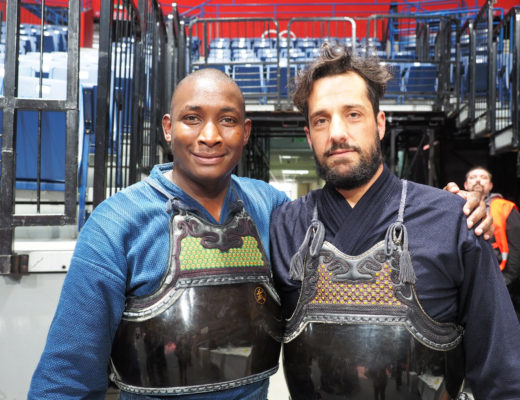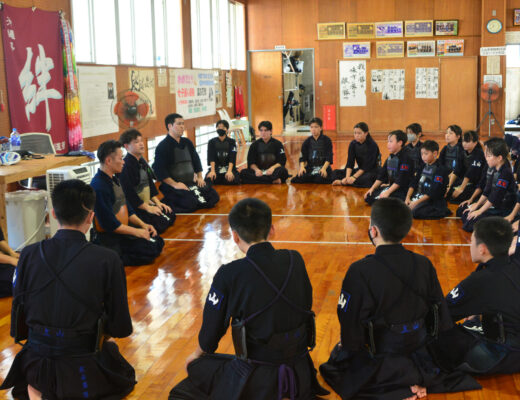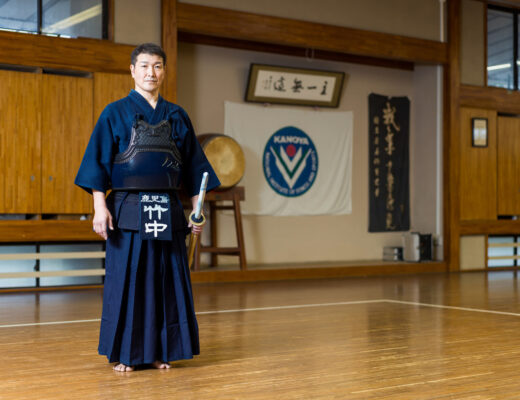2023.11 KENDOJIDAI
Translation: Jouke van der Woude
Shikake-waza learned from initiation centered Keiko
Ogawa Tsunato, Renshi 7th Dan (Kumamoto)
Born in 1980 in Kumamoto City, Kumamoto Prefecture. After graduating from Yatsushiro Higashi High School, he went on to Kokushikan University and later served in the Kumamoto Prefectural Police. He participated in the All Japan Kendo Championship, National Athletic Meet, All Japan Interprefecture KENDO Championship, and the National Police Team Kendo Championship, achieving third place in Division 2 and winning Division 3.
Regarding techniques and the mindset of Shikake-waza, I have gained much knowledge through training with various Sensei. I would like to share what I have focused on in Keiko with Sensei that have left a lasting impression within me.
During my time at Yatsushiro Higashi High School, I received daily training from Instructor Migita Kojiro. At that time, he practiced an aggressive style of Kendo, constantly pushing forward. Perhaps those who have experienced such Kendo might understand the fear of facing a strong instructor who doesn’t let their Kamae be disrupted. In this Keiko, I found myself unable to execute techniques, unknowingly retreating backward, and ultimately being unable to do anything.
I pondered on how I could successfully execute techniques against Migita Sensei. Although it may sound simplistic and embarrassing, I thought, “If Sensei advances without compromising their Kamae I will just boldly strike, almost with the intention of breaking his Shinai, giving everything I have against him.” From that point on, I practiced not being afraid, advancing forward even if getting struck or receiving Tsuki, and performing Shikake-waza ahead of Migita Sensei. Looking back, I believe that through this Keiko, I learned important technical aspects of Shikake-waza, such as the timing of early entries, as well as the mental fortitude to overcome fear and move forward.
As a result, during high school, I naturally developed the ability to perform Shikake-waza without fear in Shiai.
Additionally, during my time at Kokushikan University, I was surrounded by exceptionally strong seniors. In Jigeiko, there was hardly any time to set up Shikake-waza, and I struggled to keep up every day. In Keiko with Sensei and seniors, I aimed to initiate with maximum speed and the firm intention of getting an Ippon. However, the outcome was receiving strikes to my Do, right, left, and right again. I questioned “Why?” every day, painfully aware of my lack of ability, and lost sight of the essence of Kendo that I had been striving for. Moreover, at that time, I was merely imitating the outward appearance of strong seniors, engaging in Kendo where I only took my Kamae and sought opportunities without applying Seme or performing strikes.
In the midst of such experiences, one day, during my freshman year at university, when I asked a Sensei for Keiko, I found myself constantly focused on taking my Kamae and probing for opportunities, unable to land a single strike. At that moment, the Sensei sternly exclaimed, “You should apply Shikake! Strike!” After Keiko, the Sensei advised me, “As long as your body can move, practice Kendo that moves. There’s a lot to learn within that.”
Those words reminded me that the Kendo I had been striving for was to always initiate toward my opponent, consistently moving forward, and executing techniques with abandon.
While seeking out opportunities to strike in Kendo is crucial, if one is overly concerned about seeking opportunities, they won’t be able to execute strikes.
From then on, when requesting Keiko from seniors, juniors, and of course, Sensei, I deliberately focused on engaging in taking the initiative.
By practicing initiating Kendo, the mindset shifts from a timid feeling of being struck or receiving Tsuki to a stronger mindset of striking and performing Tsuki oneself.
As a result, the willingness to initiate turns into the act of Shikake-waza, leading to what I believe is the concept of “Kizeme” (Seme by spirit). The next step is to boldly perform techniques with abandon. In my case, this mindset became the foundation of my Kendo, whereafter I started to consider patience within Shikake as well.
In Kendo, observing oneself and the opponent, reading their emotions and movements, and seizing opportunities to strike are crucial.
However, in my case, without overthinking, I somewhat selfishly considered what I wanted to strike first. Even if I would be struck or receive Tsuki within that process, there was a lesson for me to learn about advancing and Shikake-waza. The scope of my Kendo has broadened a great deal from that.
In conclusion, Kendo encompasses the thoughts of many Sensei, and there are various Keiko methods and perspectives for different generations. I hope you can consider this as my personal experience.
Shikake-waza that considers up down, left right
The rest of this article is only available for Kendo Jidai International subscribers!





